By Victor Varela
Photography and auto racing, they are an exciting and romantic combination that has resulted in some of the most impressive images of the sport for well over 100 years. When I think of motorsports photography, I bring to mind the iconic images from such notable photographers – Jesse Alexander, Louis Klemantaski, Bernard and Paul-Henri Cahier, Rainer Schlegelmilch and Keith Sutton. They are among the photographers who have amazed, motivated and inspired me to use my experience and knowledge of photography, to capture the world of motorsports.
I have been photographing race cars over the course of 30 years, my first being at the Formula 1 race held at the Long Beach Grand Prix in 1983. Those pictures were not very impressive for my first foray into motorsports photography, as they were captured with very limited access to the race track – mostly behind a fence. But the weekend was significant in that I learned that I had to master my skills in photography and learn how to work at capturing images at a race track. In the coming years I would improve, both in front and behind the fence, at race tracks like Phoenix, Riverside (before it closed), Fontana and what I consider my home track, Laguna Seca.
I must admit that I have envied media photographers and the access they have to prime vantage points and locations on the track. They have access to the drivers, teams and the race cars that make a huge difference when trying to capture the type and quality of images that you see on the cover and pages of car and racing magazines.
Now getting credentialed is not easy and there’s a reason for that. Credentials are for working media professionals covering a race event for newspapers, motorsports publications, national and local TV news stations and media and internet sites that regularly cover motorsports. And it makes it even more difficult if you try covering any of the top-level motorsports events like F1, IndyCar, NASCAR, etc. They usually turn down a freelance journalist or photographer unless their request is accompanied by a letter from an editor from said media outlet. And even then, you might get turned down!
So, how does one apply for credentials when you don’t represent one of these media outlets? I’m sure there are several ways of trying to secure credentials. Some might work, but more than likely, you will be politely turned down.




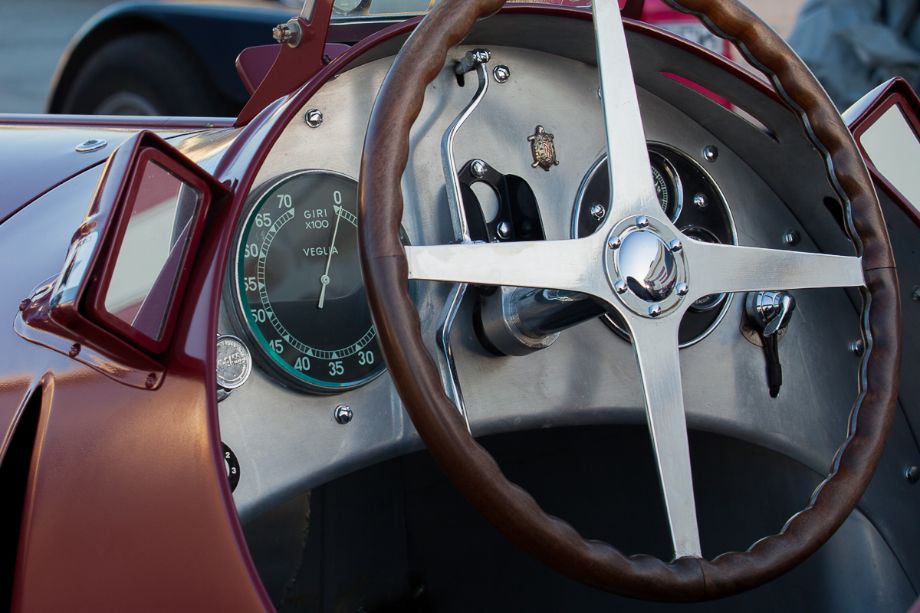



Behind the Fence – Capturing the World of Motorsports Page Two
I read an article here at Sports Car Digest titled: Go Inside the Ropes – Motorsports Photography Workshop, about the f8 Motorsports Workshop and how it’s program would be providing a unique opportunity into the world of motorsports photography. 2013 would be their inaugural year and working with the Historic Motor Sports Association (HMSA), they would offer a series of workshops for aspiring motorsport photographers to have the chance to photograph and learn from working professionals.
I signed up for their workshop in March 2013 at Laguna Seca, during the weekend of the HMSA Spring Club Event. We met up on Friday evening, with the first classroom session introducing us to our instructors – Llew Kinst, Director of Marketing for HMSA, Dennis Gray, Senior Photographer for Sports Car Digest and Jeffrey Dahl, Senior Staff Photographer for Victory Lane Magazine. They shared their extensive experience and techniques in motorsport photography, covering topics such as; equipment, camera settings, capturing motion, handling the camera, shooting in the paddock (pit candy), knowing your way around the race track and most importantly – the safety and etiquette that is required while shooting track side. They also provided their insight on how to become a professional, how to apply for media credentials and how to shoot on assignment. After the session, we were given our press credentials and media vests for the race weekend.
We spent Saturday and Sunday shooting in the paddock area, the pits and the track. The 6:1 student to instructor ratio gave each one of us a good amount of one-on-one time with our respective instructors. Most of the group had a good level of experience in photography and motorsports, which made the transition from classroom to race track very smooth for all of us.
Now, I must admit it was very exciting going through the access gate in the fence and onto the track with my vest and credentials. The experience of being credentialed and trackside when the first cars started coming thought the hairpin, letting out the first bursts from my Canon was exciting! I let the experience sink in after that first pass, and then I began to focus on capturing the cars racing by. We spent the rest of the weekend shooting throughout most of the track and in the paddock and pit area with exclusive access to pit entrance – the inside of turn 11. This was, for me, the key part of the weekend as I was able to put into practice all of the experience I had as a photographer, my extensive knowledge of Laguna Seca, what I had learned during the past two days of the f8 workshop and walking the track to all the different vantage points from which to capture the race cars. I was practicing what I knew and what I had just learned. To say that it was a great weekend of motorsport photography is an understatement!









Behind the Fence – Capturing the World of Motorsports Page Three
We were also treated to several guest speakers that weekend. John Lamm of Road & Track spoke of his experiences and what to expect as a professional. Allan Rosenberg spoke on the art of editing and post production. Pam Shatraw from Victory Lane spoke to us about working with publications and how to get into the business.
I was fortunate to have the opportunity to cover several events on the HMSA 2013 calendar. HMSA is a terrific historic motorsport organization and one that forms a unique and exciting pairing with f8 and their motorsport workshops. The caliber of their vehicle and driver entries, the events, venues and personnel, is the model of what a vintage racing series should be. Kudos to Cris Vandagriff, Llew Kinst and their entire team for a great vintage sports car series!
The HMSA events I attended included the Legends of Motorsports at Laguna Seca in June, Le Sommet des Légendes at Le Circuit Mont Tremblant, Canada in July (I had been awarded accommodations to this event from the images I submitted for the March workshop – Thanks Cris, Llew, Dennis and Jeffrey), where we had the privilege of having dinner one evening with road racing legend, George Follmer! I also covered the Coronado Speed Festival, culminating in having my images from this event being published as a featured article in Sports Car Digest!
The 2014 HMSA schedule is gearing up to be one of their best seasons to date, starting with the Spring Club Event at Mazda Raceway Laguna Seca, March 22-23, LSR Invitational, Mazda Raceway Laguna Seca, April 16, LSR Invitational, Mazda Raceway Laguna Seca, June 3-4, 38th annual Portland Historic Races, featuring Datsun, July 11-13, Sommet des Légendes, Le Circuit Mont-Tremblant, featuring Ferrari, July 11-13, 17th annual Coronado Speed Festival, September 19-21 and culmination in the newly announced – the Classic 24 at Daytona, a HSR event that is being co-promoted with HMSA, November 12-16, at Daytona International Speedway in Daytona Beach, Florida. So far, f8 has announced that they will be conducting a workshop for the Spring Club Event in March 2014 with additional workshop dates to be announced soon.








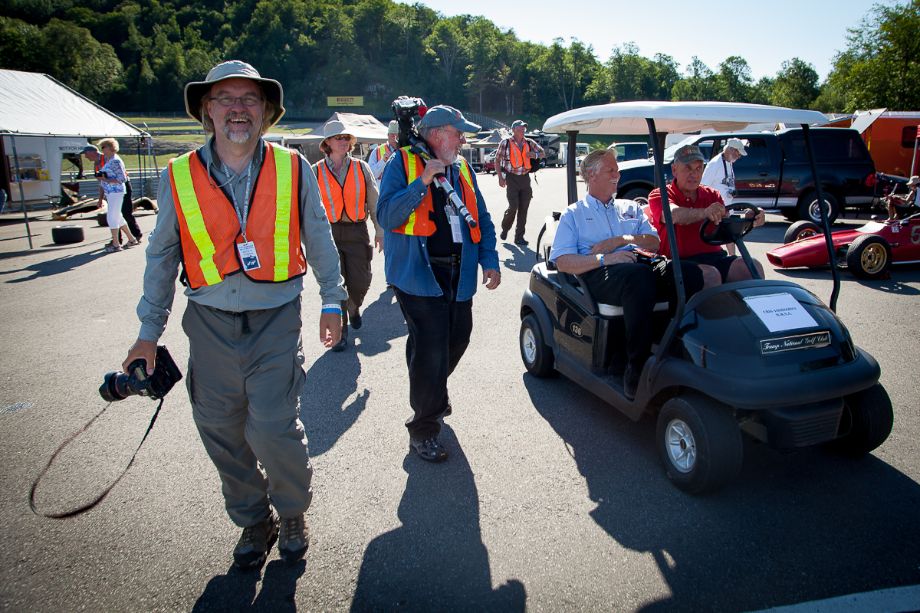
Behind the Fence – Capturing the World of Motorsports Page Four
Throughout my participation with f8 and in covering the HMSA events, I came away from the experience acknowledging things I knew as well as learning several others. A few of the key ones are:
Composition – A race car and its speed on the track are better represented if there is something in the foreground or background to compliment and capture it.
Give Yourself Room – Look for a spot where you can properly pan and set yourself up to have some good angles to capture the cars on the track.
Move – Walk the track. Look at all the possible places you can get a good field of view. Get the shots you need from that location and move to another.
Experiment – Don’t be afraid to go from Manual to Shutter Priority, from 1/1000 to 1/30. Wide angle shot, narrow depth of field shot…drop a few shots and see what comes up. If you don’t like what you see, just move along to the next shot.
Practice – This one is a no-brainer. Practice everything from the camera settings, how you stand, loading media cards and batteries and holding and panning with your lens. Just like an athlete, you have to keep in form and practice until it’s almost second nature.
Be a Photographer First – If you want to photograph motorsports professionally, it is important to be a photographer first at the track and a fan of the sport, second. There is no middle ground here. As I stated at the beginning of this article, “I had to master my skills in photography and learn how to work at capturing images at a race track”. You have to be at the top of your photographic skills in order to be well prepared to capture the action on the track and focus on the story you want to tell in your images.
Share What You Know – I cannot stress this enough. We all learn from each other and that is what makes us improve upon our own skill set – the old dog teaching the new and vice versa. It helps us validate where we are as photographers and how good we really are at it. Believe it or not, those who have extreme confidence in their skill level don’t have a problem in sharing what they know. We all have a distinct way of seeing the world and visualize things in our own way. So that one trick shot you share, will have a very different look with someone else. This is a philosophy that f8 practices and employs in providing aspiring motorsports photographers with ideas, trends and techniques that are shared and explored.
Put in the Work – If you want to get into motorsports photography, you have to put in the work to get where you want to be as a motorsports photographer; start at the grassroots level; cover local and regional events, car shows and related events, where getting credentials are much easier to obtain. Getting out, networking and establishing yourself is a great path to eventually covering a top-level series.
In summary, 2013 proved to be a great year for my motorsports photography. Although it was a bittersweet one with the loss of my father, Saul Varela, to pancreatic cancer, the year held some very good and memorable moments as well. I had the opportunity to do more of what I loved at a level only a few can do. My participation in the f8 workshop proved to be an excellent experience that strengthened my skill set and knowledge of motorsport photography as well as providing me with the tools and information to build on and succeed in this field of photography. I appreciate the candid, friendly and professional patience of the instructors and would like to thank Dennis, Llew and Jeffrey, for sharing their expertise and knowledge with me and the rest of the f8 participants. I would also like to thank Sports Car Digest’s Publisher, Jamie Doyle, for the opportunity to publish my articles and images here.
I look forward to another great year of photographing fast and beautiful race cars.


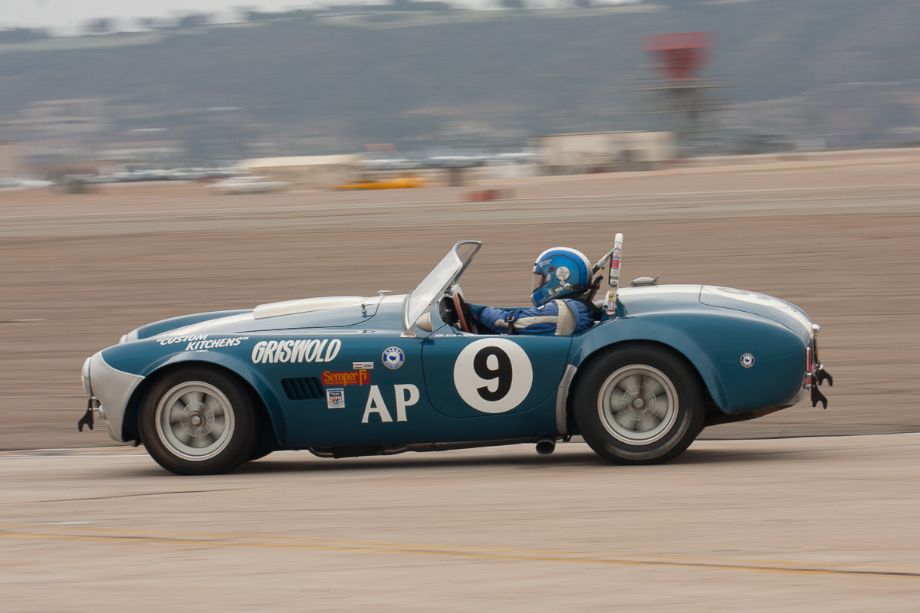

Chassis No. SL71/34. HMSA Sommet des Legendes 2013 (Taken at 1/1000 sec.@ f/4.0 – ISO 100) © 2013 Victor Varela




Victor Varela’s Year at the Races – Photo Gallery (click image for larger picture and description)
[nggallery id=641 images=15]
[Source: Victor Varela]


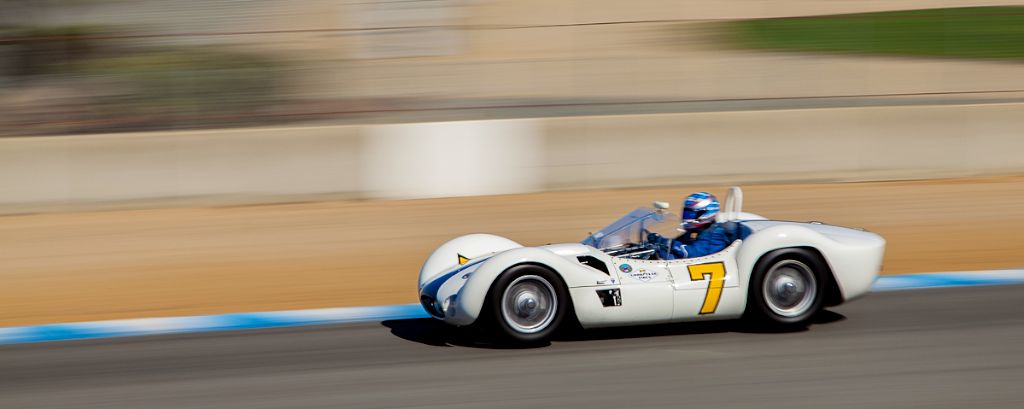
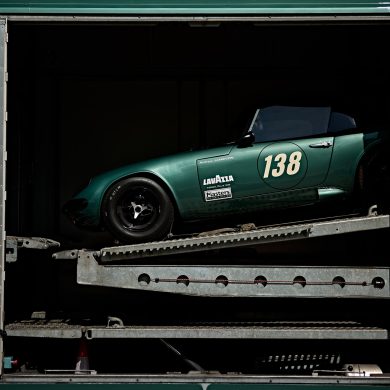
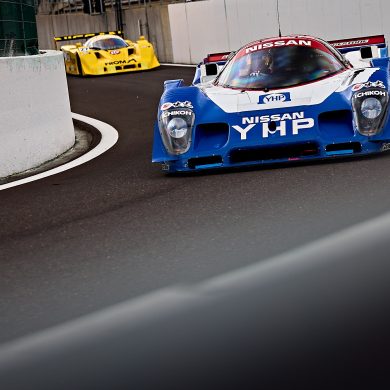
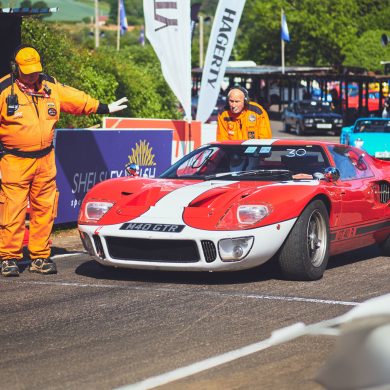
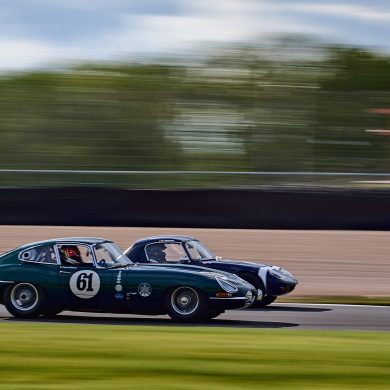
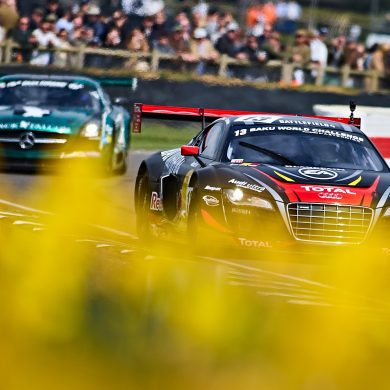
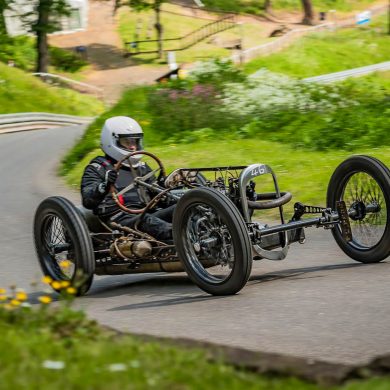


Vic has described our f8 Motorpsorts Photography Workshops program. Llew Kinst, Jeffrey Dahl and myself bring three divergent views to the art of shooting race cars, their drivers, and the circus surrounding an event. Every f8 participant is exposed to ‘hands on’ instruction on technique combined with classroom time on how the three of us approach a shoot. f8 participant’s also have access to the f8 Workshop website loaded with the insights of working professional motorsports photographers.
This year f8 includes workshops during the HMSA Laguna Seca March 22-23, The Mitty at Road Atlanta April 25-27 and a New Masters Class during the Classic 24 at Daytona, Daytona International Raceway, November 12-16. This Masters class will include hours of shooting after the sun sets and before it rises.
Much as the experience Vic describes I can promise every f8 participant an ‘inside the fence’ workshop loaded with fun and excitement.
I have read that some sponsoring organizations require photographers, who apply for media credentials to motorsports events, to agree not to sell their photos commercially on the Internet or otherwise? If this is correct, what is their rationale?
Louis.
I have covered most of the major and many of the less major sanctioning bodies/organizations in the US. Not once have I been restricted as to the end use of my images. The Reno Air races do require photographers to submit images they may use for their program, advertising and other uses if the photographer expects to return the following year.
Any photographers have other experiences?
With the advent of digital photography I have found that everyone and their country cousin at motorsports events has some type of camera and in many cases these photos are being offered to print and digital magazines for free or next to free. How has this situation impacted the professional photographer trying to make a living covering motorsports?
It has been the same sense time immortal. Always someone looking for a way inside the fence and hoping their images might be the key to unlock the gate. With digital cameras it’s easy or at least easier then in years past to get a ‘passible’ image. Many digital sites will publish an image to produce results in search engines. sportscardigest.com and a few like them demand a high level from their photographers both in seeing and producing an image. F8 Is in the business of showing photographers how to improve their images to a level where they can be considered for publication. What that means to you and I is that we need to keep evolving our ‘eye’ to keep ahead of the howling pack of blood thirsty photographers who want to replace us.
Victor, as someone who has (quite literally) dabbled in motorsport photography for over 40 years, I find that your images are really creative and well thought out. I especially like the use of color saturation and contrast. Your compositions are unconventional and capture the “decisive moment” that sets a photograph apart from a snap-shot.
Can you share which cameras and lenses you are using?
Hi David,
I appreciate the kind words you have for my images. It’s rewarding to know that my images convey that creative and unconventional quality – something that I usually visualize before I even put my eye next to the viewfinder. My love and passion for race cars and racing in general is a big part of how I “see” the image.
I currently have 3 DSLR bodies I use: 2 Canon 40Ds and 1 Canon 5DMkII. Lenses: Canon L 70-200mm f2.8, Canon L 24-105mm f4.0, Tamron 17-50mm f2.8
Wishlist: Canon L 400mm f2.8
Thanks again, David.
Vic
As a fellow photographer (www.macfly.com) and car enthusiast (ww.bmwz8.us) I am constantly thrilled and inspired by the images here, they show a passion and caring that I really appreciate. There is no question that for me the photography is what makes this site, so bravo, and keep up the great work!
I agree, Andrew. SCD has some exceptional motorsports images by highly talented photographers on their site. This makes it all the more reason for me to feel privileged as photographer, to have my images showcased here.
It is my impression that professional photographers have a much shorter deadline these days to write, edit and transmit their story and photos to their editors. As a result I see them in the media trailer until late trying to sort and edit the hundreds of photos they took during the race. Have the requirements to be the first online to publish a story and photos made life a little more difficult compared to twenty or thirty years ago?
Digital has certainly changed the game. Passing along “advice” from leading experts who presented at an incredible conference on the digital economy, we are on the cusp of automation that cannot be stopped. Advice was adapt or get “disrupted”. Easier said than done. BTW “Edie Arrowsmith” driving the # 26 ex Ralph Salyer McLaren Mk1 is a woman, not a man; and quite a good driver. Owns a shop in Scottsdale. Chris Hines oversees the work. Also fast the last time I saw him behind the wheel.